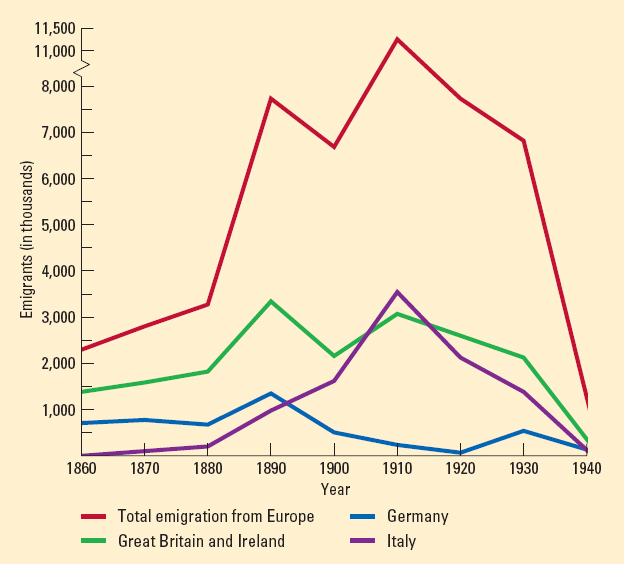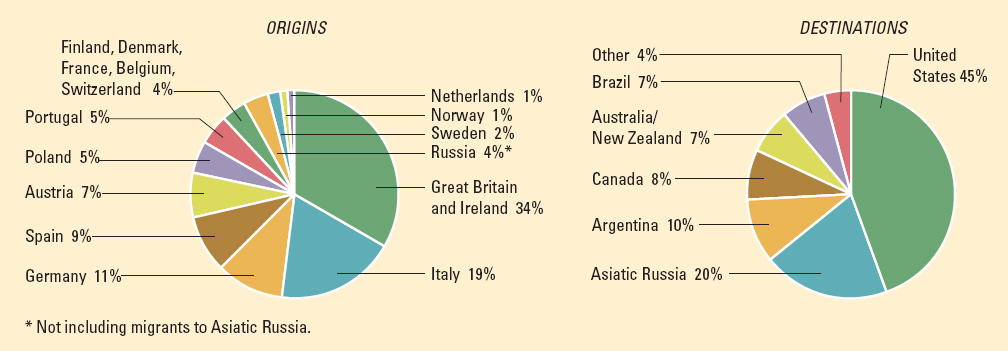The Pressure of Population
In the early eighteenth century, European population growth entered its third and decisive stage, which continued unabated until the early twentieth century. During the hundred years before 1900 the population of Europe (including Asiatic Russia) more than doubled, from approximately 188 million to roughly 432 million.
These figures actually understate Europe’s population explosion, for between 1815 and 1932, more than 60 million people left Europe. The growing number of Europeans provided further impetus for Western expansion, and it drove more and more people to emigrate. These emigrants went primarily to the rapidly growing neo-
Before looking at the people who emigrated, consider these three facts. First, the number of men and women who left Europe increased rapidly at the end of the nineteenth century and leading up to World War I. As Figure 24.2 shows, more than 11 million left in the first decade of the twentieth century, over five times the number departing in the 1850s. Thus, large-

 Emigration from Europe by Decade, 1860–
Emigration from Europe by Decade, 1860–Second, different countries had very different patterns of migration. People left Britain and Ireland in large numbers from the 1840s on. This outflow reflected not only rural poverty but also the movement of skilled industrial technicians and the preferences shown to British migrants in the overseas British Empire. German emigration was quite different. It grew irregularly after about 1830, reaching a first peak in the early 1850s and another in the early 1880s. Thereafter it declined rapidly, for at that point Germany’s rapid industrialization provided adequate jobs at home. This pattern contrasted sharply with that of Italy. More and more Italians left the country right up to 1914, reflecting severe problems in Italian villages and relatively slow industrial growth.
Third, although the United States did absorb the largest overall number of European emigrants, fewer than half of all these emigrants went to the United States. Asiatic Russia, Canada, Argentina, Brazil, Australia, and New Zealand also attracted large numbers, as Figure 24.3 shows. Moreover, immigrants accounted for a larger proportion of the total population in Argentina, Brazil, and Canada than in the United States. The common American assumption that European emigration meant immigration to the United States is quite inaccurate.

 Origins and Destinations of European Emigrants, 1851–
Origins and Destinations of European Emigrants, 1851–